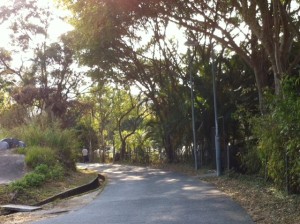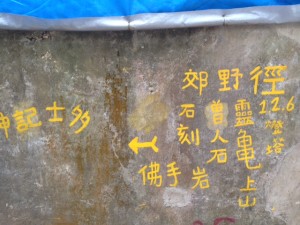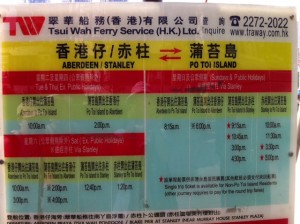Updated on 12 Feb 2014:
Famous and outspoken radio host Li Wei-ling was fired without any warning or explanation from her employer at Commercial Radio Hong Kong on 11 Feb 2014. She said she believed completely that Chief Executive CY Leung was behind this.
Updated on 20 Jan 2014:
The latest is that the founder of am730, a free newspaper critical of government and authorities, Shih Wing-ching, disclosed that the mainland capital companies have been withdrawing advertisements from its newspaper. “Beijing will try to shrink the press freedom of Hong Kong all around, as they have lost [out] in the city’s public opinion since the handover,” Shih told Commercial Radio (reported by SCMP on 15 Jan).
The editorial team at am730 issued a statement subsequently, expressing their concern over press freedom being suppressed.
Reading “Ming Pao” is my family tradition. Until now, my father still buys and reads “Ming Pao” every day, which is widely seen as an influential Chinese newspaper with independence. So when the news broke on 7 January that the newspaper’s chief editor, a Hong Konger promoted to the position two years ago, will be replaced by a Malaysian, that shocks me and many others. The move is so unusual that it prompts the newspaper staff to sign a petition to ask for explanation of the sudden change and the assurance of editorial independence from the senior management. It also prompted 200 former staff of the newspaper to sign a declaration expressing their concern over the erosion of Hong Kong’s press freedom. Columnists of the newspaper also opted to leave their column blank to protest against the unpopular change of the chief editor.
Without a doubt, Beijing is clamping down on Hong Kong’s press, heavily and successfully. Those caring about Hong Kong have reasons for concern.
Hong Kong media organizations fell one after another in recent years, bowing to Beijing influence. So sad. Beijing Government forgets one thing though. More it wants to control, more things get out of control.
Prior to Ming Pao and am730 incidents, a serious of events have been unfurling, showing how press in Hong Kong is being gradually controlled and self censoring. This, cannot be turned a blind eye to. When Hong Kong completely loses its press freedom, it is certified dead.
Here is just a sampling of how Hong Kong is losing its press freedom:
SCMP appointed former China Daily correspondent as chief editor in 2011
Hong Kong veteran English-language newspaper South China Morning Post was acquired by Kerry Group in 1993, whose boss is a Malaysian tycoon with friendly ties to Beijing authority. Since then the century-old newspaper has stirred up a raft of controversies surrounding self censorship. The appointment of Mr Wang Xiang Wei in 2011 as Chief Editor signifies its total demise, who is a former “China Daily” reporter and a Political Consultative Conference member (only those with friendly relationships with mainland authorities can be appointed such). A weekly magazine (陽光時務) in June 2012 has produced an exclusive feature, with former SCMP Beijing-based reporter Paul Mooney giving a personal account of why he was kicked out of the SCMP by Wang and the tarnished reputation of Wang as a censor. Read the report here.
Commercial Radio Host Replaced in November 2013
A host of Commercial Radio renowned for daring criticisms of Hong Kong and Beijing authories, was removed from the radio station’s prominent morning show. She was asked to host an evening program instead.
Hong Kong Economic Times’ Self-censorship in December 2013
A musician who is a columnist for Hong Kong Economic Times complained that the name of Hong Kong Chief Executive CY Leung was struck out from his column article. The article is about an Ikea toy becoming the symbol of rage of Hong Kongers towards the government led by CY Leung. His article originally mentioned twice CY Leung, and twice, the name was struck out by the newspaper.
 Lau Shui Heung Reservoir (流水響水塘) has long lost its irrigation function for agricultural lands nearby as Hong Kong’s farming lands have become a rarity. But the biodiversity there plus the picturesque scenery has made the reservoir area a lovely place for leisure walking.
Lau Shui Heung Reservoir (流水響水塘) has long lost its irrigation function for agricultural lands nearby as Hong Kong’s farming lands have become a rarity. But the biodiversity there plus the picturesque scenery has made the reservoir area a lovely place for leisure walking. The walk is pretty easy with very mild climbs and has alternative dirt, stone and concrete trail. The middle part of the trail is concrete, after you reach an intersection and a pavilion. Follow the sign pointing to Tai Po Road, and go down the slope a bit, before turning right, when you see this sign, into a nice dirt path leading to the reservoir.
The walk is pretty easy with very mild climbs and has alternative dirt, stone and concrete trail. The middle part of the trail is concrete, after you reach an intersection and a pavilion. Follow the sign pointing to Tai Po Road, and go down the slope a bit, before turning right, when you see this sign, into a nice dirt path leading to the reservoir.  This last part of the trail in the reservoir area is very green and captivating.
This last part of the trail in the reservoir area is very green and captivating.
 How to get to Lau Shui Heung Reservoir
How to get to Lau Shui Heung Reservoir
 But be prepared to wait at least half an hour for the minibus as the services are not frequent.
But be prepared to wait at least half an hour for the minibus as the services are not frequent.






















